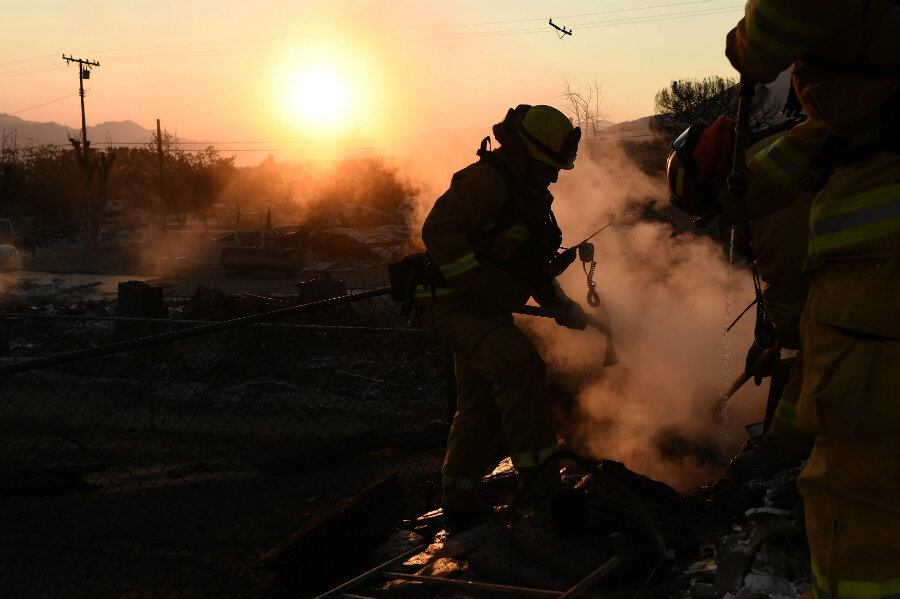California firefighters succeed in controlling Erskine wildfire
Loading...
The largest and most destructive wildfire of the season is now mostly contained, according to California fire managers.
The fire near, referred to as Erskine, has been raging through the drought-ridden southern end of the San Joaquin Valley, north of Los Angeles, since last Thursday. The blaze, exacerbated by high winds destroyed more than 250 structures in its first few days as it moved through communities near Lake Isabella, Reuters reports.
About 1,800 firefighters have been fighting the fire, and have now contained 60 percent of it in foothills in Kern County, allowing a major highway to reopen and some evacuees to return home, officials said.
The fire burned more than 70 square miles and was also responsible for two deaths, a priest and his wife, Byron and Gladys McKaig, who are the first casualties of the California wildfire season.
The wildfire season officially starts in May, but California saw its most widespread outbreak this past week, with nine majors fires burning across the state, mostly in the southern half. Erskine was the largest.
An early summer heatwave may have contributed to the blazes; high temperatures throughout southern California prompted the National Weather Service to issue excessive heat warnings in Los Angeles and surrounding valleys and deserts on the first day of summer, reports the Los Angeles Times.
The heat wave has had a serious effect on the fire conditions. Ken Plimott director of the California Department of Forestry and Fire Protection, notes that last week the state had nearly 300 new fires, and says heat wave temperatures are drying out vegetation, which becomes fuel for fires.
Along with climate change and El Niño-induced temperature highs, California's five-year drought is also causing unprecedented conditions for firefighters to contend with.
"And what we're seeing are fires burn at just exponential rates," Mr. Plimott told Democracy Now's Amy Goodman. "Last year, we had two of the state's top 10 most damaging fires in our history, and they were burning at rates that 30-year veteran firefighters haven't seen. In one afternoon last year, we had a fire – you know, over 20,000 acres in just five hours."
Plimott says that with the combination of the draught and the high temperatures, the "trend is larger, more damaging fires and more acres burned."
As wildfires effect large portions of the southwest, the United States is actively seeking new solutions to the destructive blazes, and has been utilizing technology to do so. Federal agencies are researching the use of drones, which could potentially gather information about a fire and its movement using heat sensors and also fly closer to a fire than humans to release fire retardant, according to The Hill.
Satellite technology is already being employed to both track and contain fires, the Monitor's Lucy Schouten reports.
A NASA program in partnership with the US Forest Service, called Rapid Response, connects fire crews with heat-sensitive, infrared images from satellites to help them plan the best way to contain a fire.
"Fire operations are heavily based on intelligence," Robert Sohlberg, a principal faculty specialist at the University of Maryland and a lead investigator with NASA's fire management program, told the Monitor.
The imaging allows firefighters to track the movements of the fires, he said, as well as a fire's specific properties, like convection currents, which could effect how crews approach the blaze. The more information crews have, Mr. Sohlberg said, the better they will be able to plan for safety and efficiency.
In addition, the Associated Press reports that a growing network of online cameras installed on forested mountaintops has the potential to change the way crews fight fires. The high-definition cameras have the ability to tilt, zoom, and rotate 360 degrees, which can aid in informing strategies for fire suppression. Scientists with the University of Nevada, Reno, who built the system, are trying to teach the cameras to recognize fire and smoke and send an alert for 20 high-definition cameras being installed around the Lake Tahoe region, the AP reports.
Material from Reuters and the Associated Press was used in this report.







